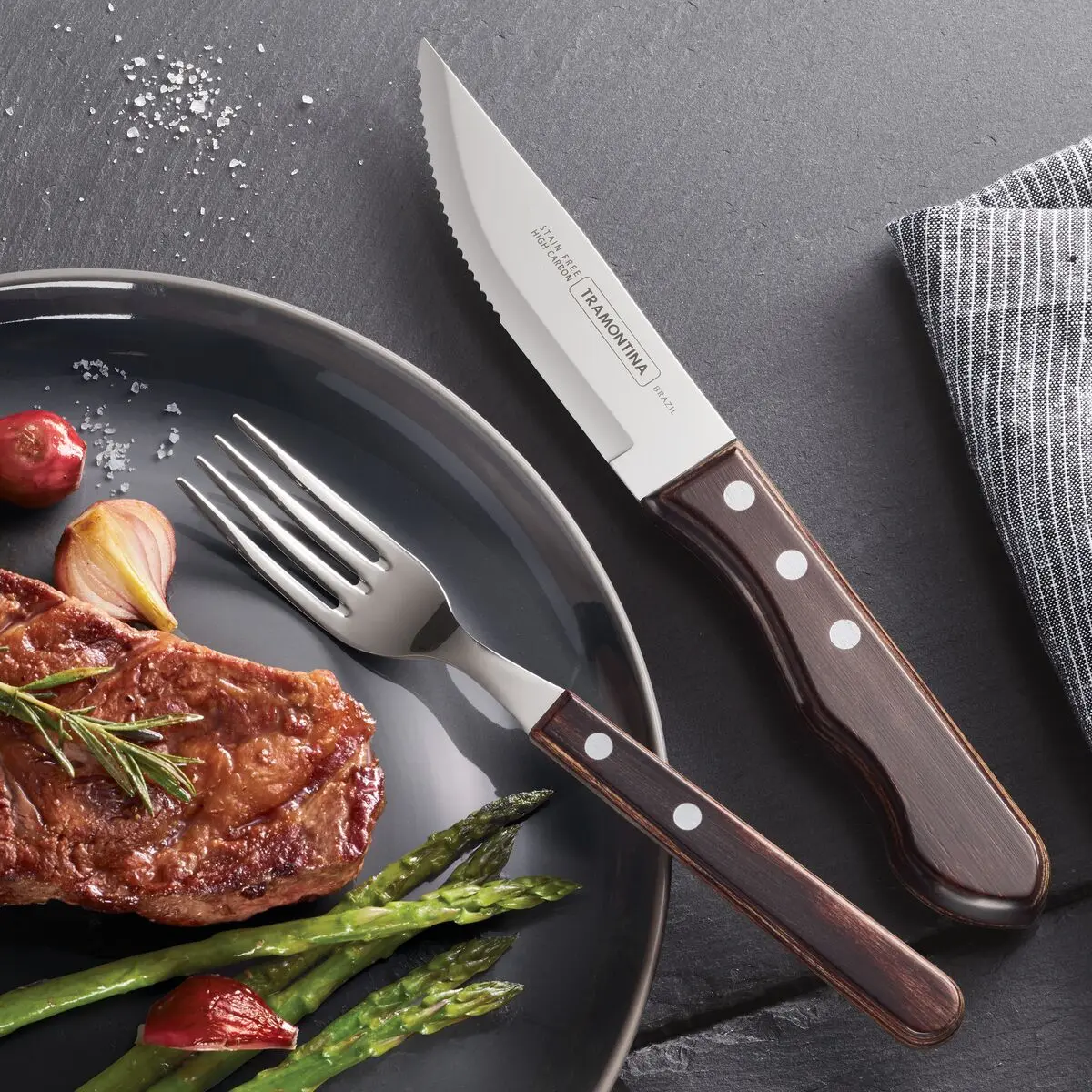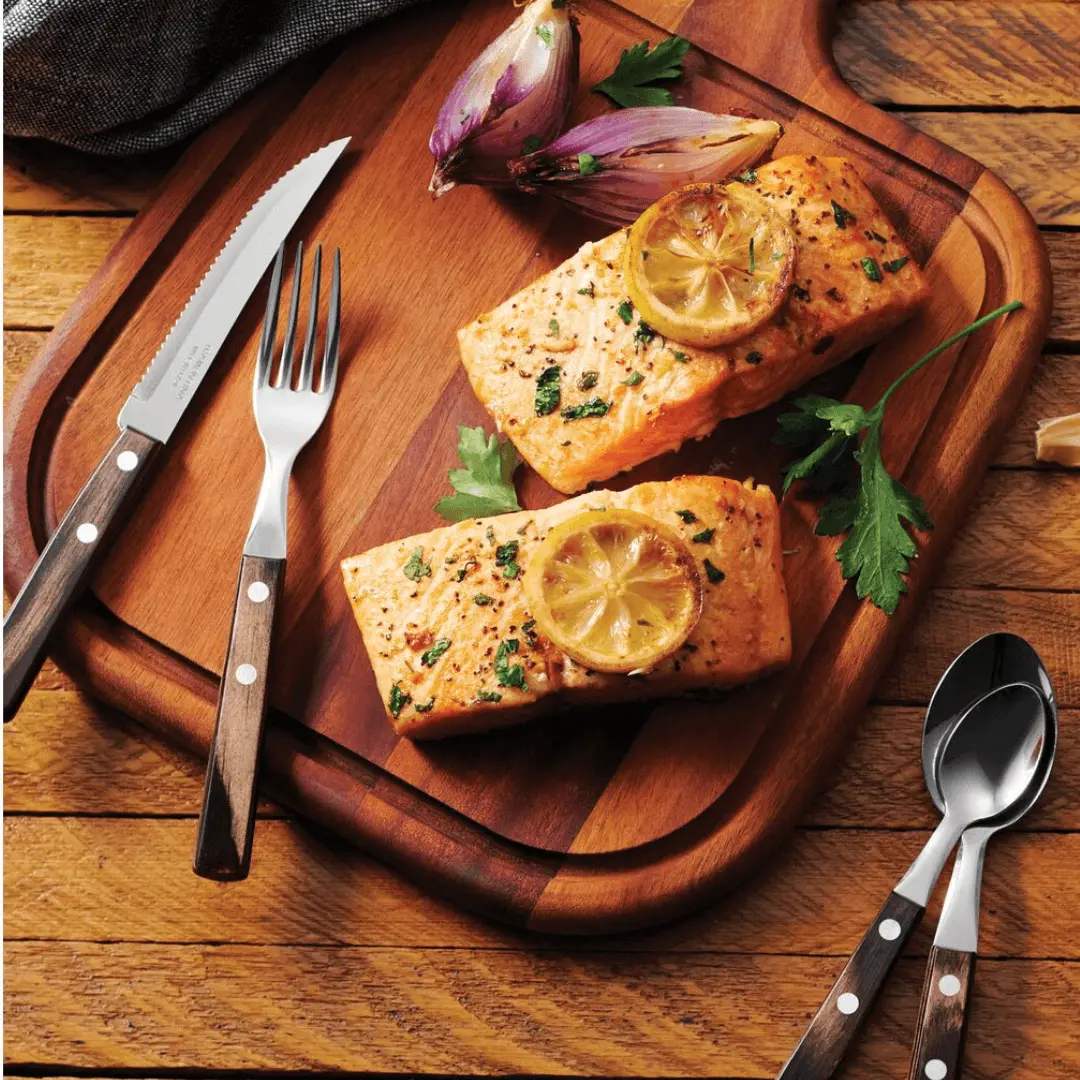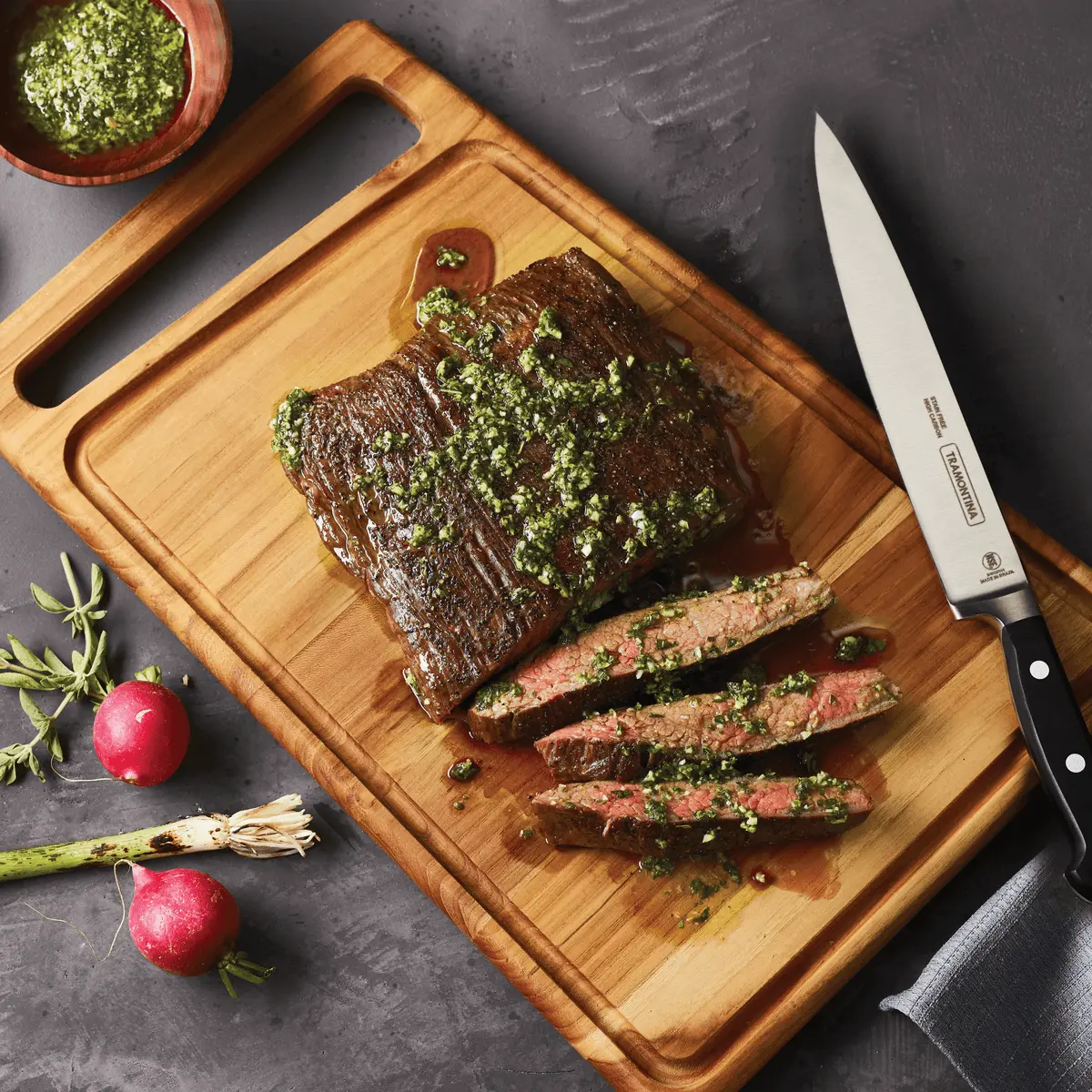No products in the cart.
Uncategorized @vi
Secrets to choosing steak knives, elevate your premium meet experience
Overview of the importance of choosing steak knives
Enjoying a tender, juicy, and flavorful beefsteak is an amazing culinary experience. However, to fully savor the taste of this dish, you need the right steak knife.
A steak knife is not just a simple tool for cutting meat; it is also a crucial part of elevating your dining experience. The right knife will help you cut the meat easily, preserve its flavor and moisture, and reflect the sophistication of the diner.
So, how do you choose the right steak knife? This article will share with you the secrets to selecting the perfect knife for yourself.

Important criteria for choosing steak knives
Choosing a steak knife plays a very important role. A good knife not only allows you to smoothly cut through premium meat but also preserves the flavor and moisture of the meat, making the meal more elegant and refined. Let’s explore the important criteria for selecting steak knives to fully enjoy a high-class dining experience
Knife material
Knife material is the first and most important factor when choosing steak knives. It not only affects the durability but also the cutting performance and the ability to maintain sharpness.
Stainless steel: Knives made from stainless steel are the most popular choice because they are highly resistant to rust, easy to maintain, and very durable. They retain their sharpness for a long time, making them suitable for daily use.
Carbon steel: High-quality carbon steel knives have superior sharpness and are easy to sharpen when needed. However, this type of knife is more prone to rust if not properly maintained, so it should be dried immediately after washing and stored in a dry place.
Each material has its own advantages and disadvantages. Depending on your usage needs and maintenance habits, you can choose the most suitable material.
Blade design
The design of the blade directly affects the cutting ability and the convenience of use.
Serrated blade: This type of blade is suitable for cutting pieces of meat with a hard outer crust or tough fibers. A serrated blade helps prevent the meat from tearing and easily penetrates through tough layers of meat.

Straight blade: A straight blade is suitable for cutting soft, well-cooked meat. A straight knife provides smooth cuts, maintaining the meat’s tenderness without altering its structure.

Size and shape of the steak knife
The size and shape of the steak knife are also important factors to consider.
Ideal length: A typical steak knife usually ranges from 10 to 15 cm in length. This length allows for cutting through large pieces of meat while ensuring good control during use.
Weight and balance: A steak knife should have a moderate weight for easy grip and control. The balance between the blade and handle is also important for comfort and safety while cutting.
Knife handle
The knife handle is the part that directly contacts your hand, so the material and design are crucial considerations.
Handle material: Common materials include wood, plastic, and metal. Wood handles provide a warm and elegant feel but require careful maintenance to prevent mold. Plastic and metal handles are easier to maintain and more durable, but it’s important to choose designs that offer slip-resistant features.
Convenient design: The knife handle should be ergonomically designed to fit comfortably in the user’s hand, with smooth contours for a comfortable grip. Anti-slip designs help reduce the risk of accidents during use.

Guide to choosing the right steak knife
Identify your usage needs before purchasing a steak knife, it’s important to clearly identify your usage needs. This helps you choose a knife that best fits your culinary habits and style.
Purpose of the knife: If you frequently enjoy beefsteak or other grilled meats, investing in a high-quality knife is essential. Conversely, occasional users can opt for mid-range knives that still offer durability and performance.
Common types of meat: For soft cuts like beef, a straight-edged knife is suitable. For meats with a tough outer layer or lamb and pork, a serrated knife makes cutting easier.
Testing and sensation testing and getting a feel for the knife before buying ensures it fits comfortably in your hand and matches your usage style.
Handling and testing the knife: When holding the knife, it should feel comfortable and not slippery. Test the weight and balance to ensure it’s neither too heavy nor too light for you.
Signs of a good knife: A good knife has a sharp blade without chips or signs of damage. The handle is solid, not loose, and designed for comfortable grip.

Smart shopping
Choosing to buy steak knives from reputable sources ensures peace of mind regarding product quality and after-sales service.
Reputable purchasing locations: You can buy knives from specialty kitchenware stores, large supermarkets, or trustworthy online retail websites. Avoid purchasing knives from sources with unclear origins to ensure quality and avoid counterfeit products.
Price and quality: High-quality steak knives may come at a higher price, but it’s a worthwhile investment. Compare prices and read customer reviews to find the knife that best fits your budget and requirements.
With the detailed and helpful information in this article, you’ll easily choose the right steak knife, enhancing your experience of enjoying premium meats and transforming each meal into a fantastic culinary experience.
Contact X-BBQ for advice and support on various kitchen and serving knives. We are committed to providing you with perfect quality products, worthy of a smart and sustainable investment.


 Tiếng Việt
Tiếng Việt